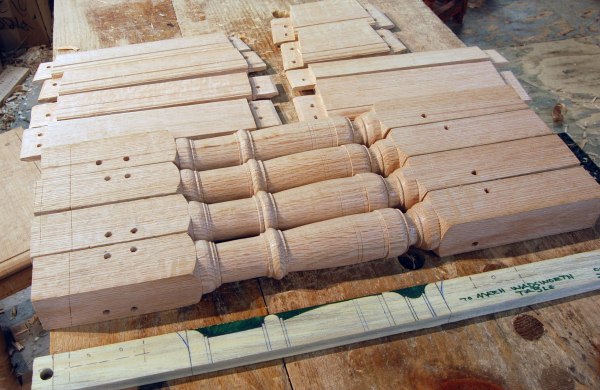
I’ve made lots of joint stools over the years. Right now, I have a few underway, (see above) and a joined “form” to go with them. A form is just a stretched-out joint stool, such as this one I shot in Derbyshire a few years back.
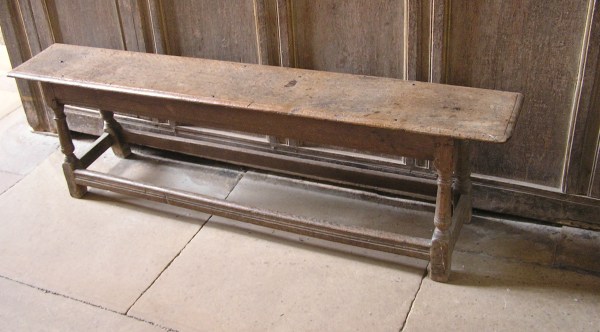
Surviving examples from early New England are not common, I can think of maybe a dozen or so. But in England, these things abound in all shapes and sizes. I use examples from both places for inspiration when I’m making stools.
In my research I have collected names for stools from probate inventories, and sometimes you can see what the people were looking at as they made the list. Other times I’m still scratching my head. The quotes that follow are from inventories in New England and old England.

“(T)wo little joyne stooles” – I have two little kids, so that was easy enough.

I haven’t made any “busted stools (worth) 1s6d” yet, but this example tested my mettle.

“(T)urkey worke stooles” are upholstered stools covered in wool that looks like a Turkish carpet. Usually it’s turkey-work chairs you see, such as this one.
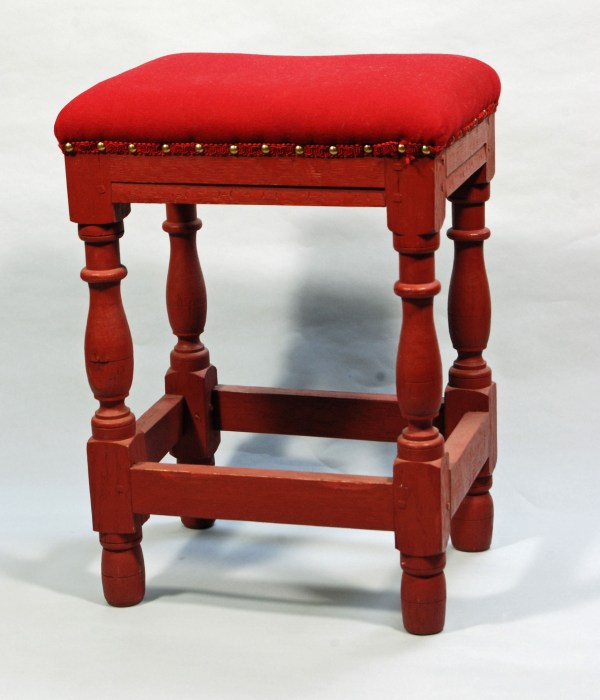
Now, if I can just find someone who can make turkey-work covers, then I’d make an upholstered stool. Another name for an upholstered stool is “wrought stoole,” and Jennie Alexander made one we put in the book “Make a Joint Stool from a Tree.” That example was upholstered by our colleague, furniture historian Bob Trent.
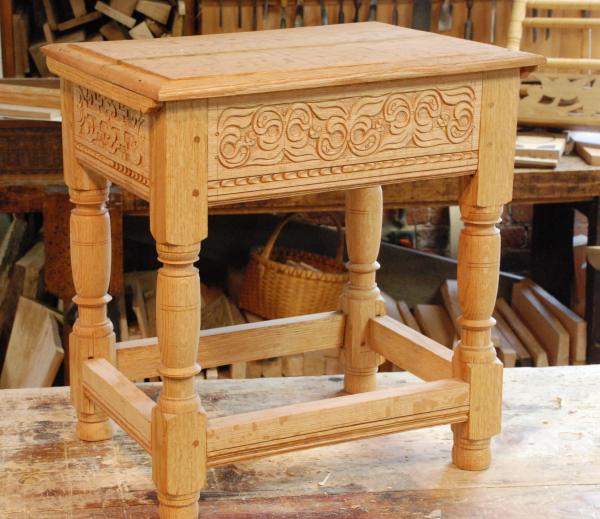
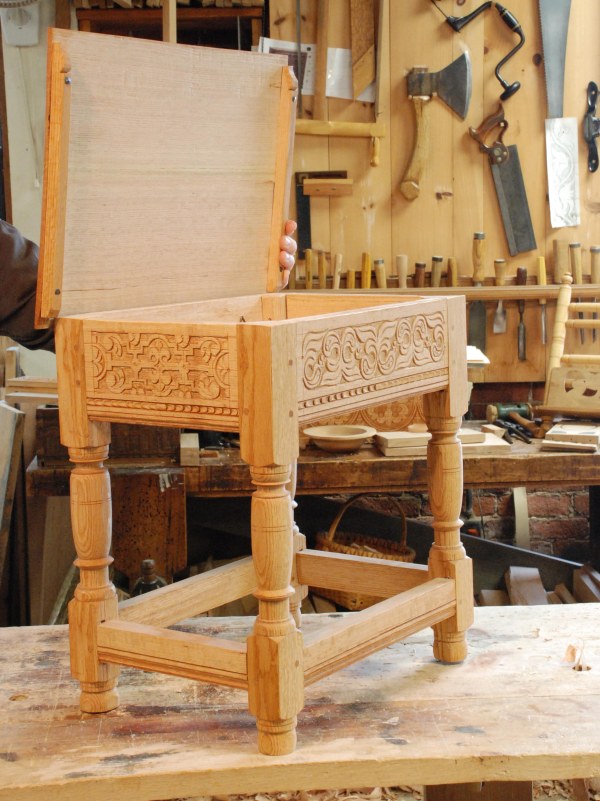
I hope to not need “a close stoole 8s,” but sometimes it’s not necessarily a stool of ease, but just a stool with an enclosed box in it. I have made one of those by fitting a bottom into the aprons. You can nail the bottom to the lower edges of the aprons, or fit it into grooves in the apron’s inside faces. Then just hinge the seat instead of pegging it down.
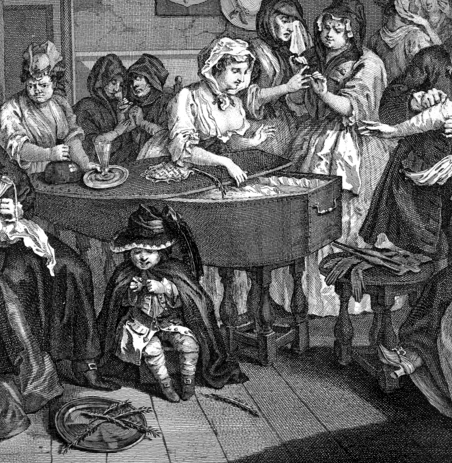
One last use for a joined stool shows up in a non-period term that I hear a lot from visitors from the United Kingdom, usually old-timers. “Coffin” stool, like in William Hogarth’s series of engravings in “The Harlot’s Progress.”
And the phrase “6 joined stools of the worser sort….” Well, it doesn’t say “worst” sort, so I guess some I have made are “worser” than others. So I keep trying to get them better.
— Peter Follansbee, one of the authors of “Make a Joint Stool from a Tree.”